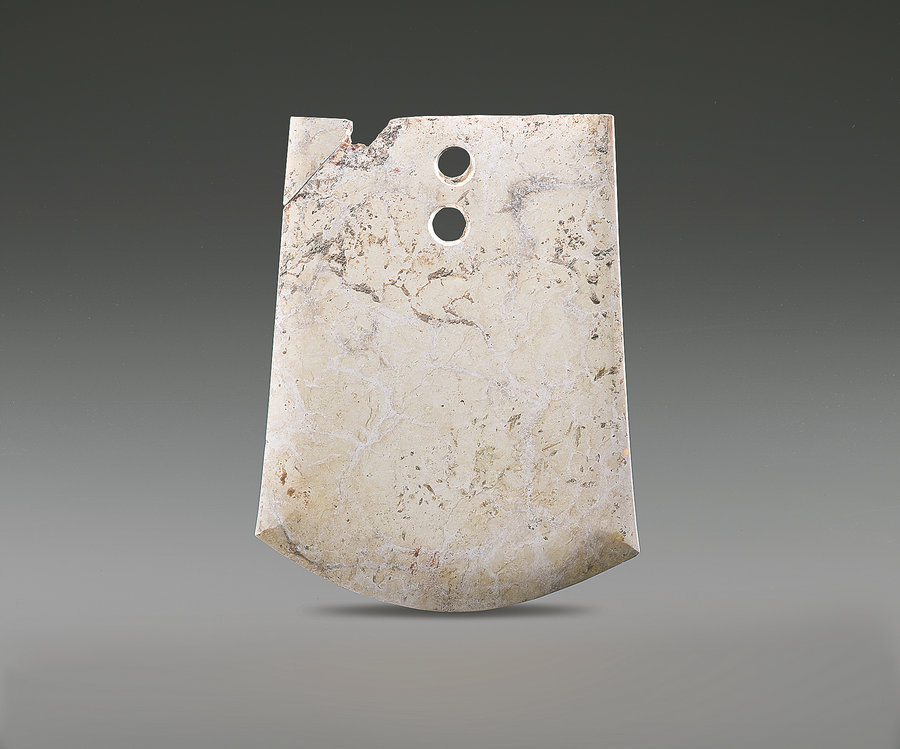

In 1986, a jade piece weighing 6.5 kilograms, called "King of Cong", was found in the tomb of a ruler. The cong, a cylindrical item, with squared-off outer corners, is an iconic item in Liangzhu culture. The King of Cong, the biggest of its kind, was too big and heavy to wear, thus demonstrating the status of the tomb's occupant.
A large jade ax — a symbol representing military power — was also found in the tomb. Both the jade ax and cong have a special emblem engraved on them: a human-shaped deity riding on an animal, a ubiquitous motif seen on other jade items produced at the Liangzhu site.
"Jade in Liangzhu culture is a medium that unified the whole society. The emblem on it never changed. It had a very stable religious system, lasting for nearly 1,000 years," says Wang.
It also proved that there would have been a ruler that controlled a kingdom where people came from different places. Wang's team found lots of pits that prove there were various jade making workshops in the capital city. Some were made for the lower echelons of society and some for nobles.
Craft workshops flourished at the time, such as those producing items from stone, ceramic and wood.